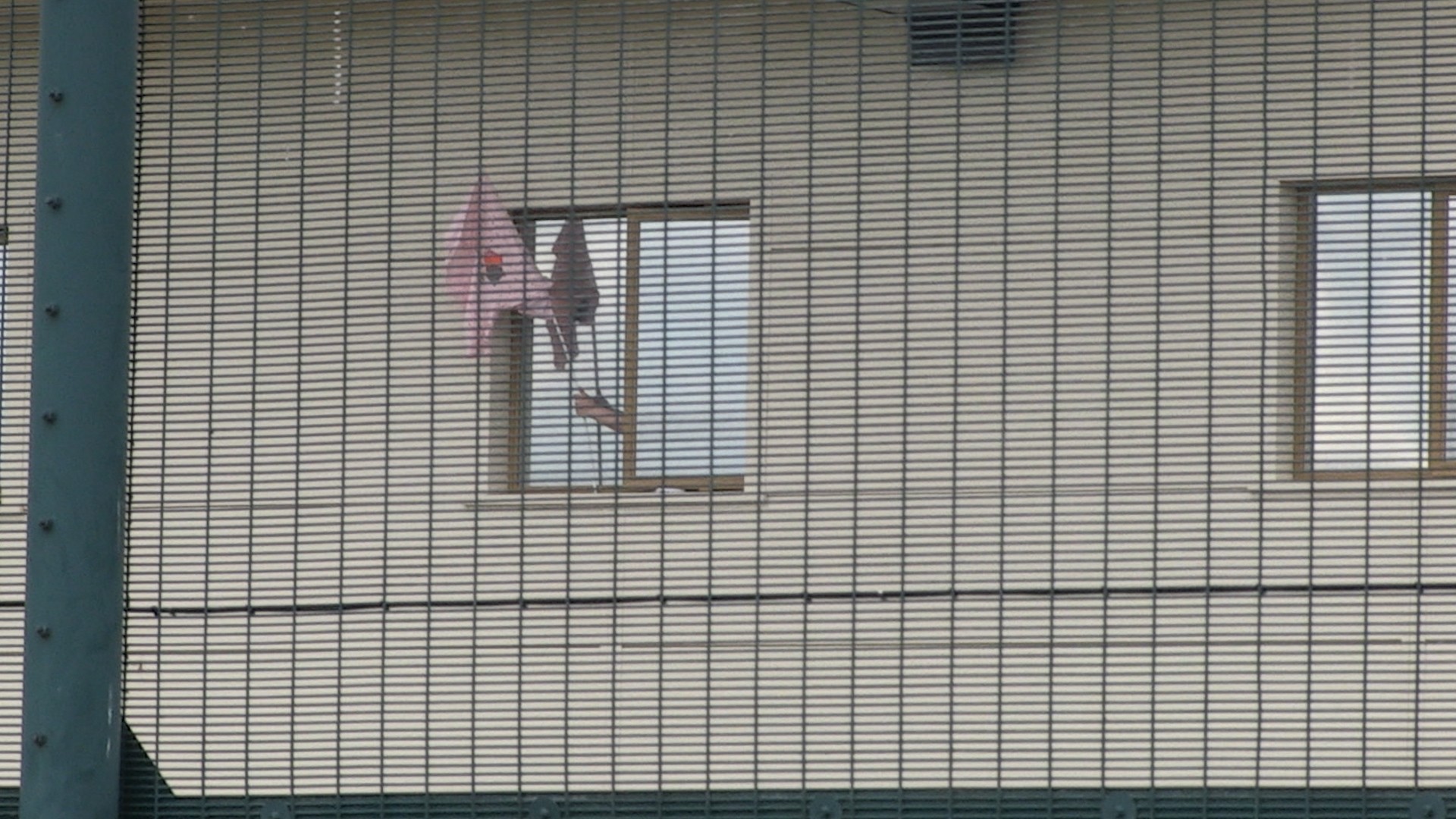The Chalcots Estate in North London (Ben Steves/PA Wire/PA Images)
On the Chalcots Estate in north London, we might soon see the 21st century stripped away. I grew up a few stops away on the Tube; the 1960s towers would find some way to crowd into my line of sight just about every day. I liked them. Each face of each tower was draped in soaring concrete bands, softened and pockmarked with age. They would glow yellow and gold in the sunshine, or stand stark and tall in the winter; in the early morning the sunlight would sparkle from the windows, and at dusk the towers took on a solemn, monumental heaviness.The Chalcots estate was never an architectural masterwork – not like the nearby Alexandra Road, a magnificent curve of stepped-back terraces that for all its years of grime and speckling still looked as if it had arrived straight from some utopian and egalitarian future – but these were decent homes built for the people; they had presence, they had depth.In 2006, Camden council extensively renovated the estate, covering its old concrete with swathes of white plastic cladding. It didn't make the towers look better, exactly, just different. They fade into the faint and constant grey of the sky now. They don't look modern; they look virtual. A computer simulation in which people actually live. It's as if instead of actually building anything, the council had just erected an enormous planning document on the Adelaide Road.Until now. After a frantic safety check, it was revealed that the cladding panels on the Chalcots estate were the same as those installed on Grenfell Tower, and had been put there by the same firm. The towers are now being evacuated until the panels are removed; many residents, understandably upset by the chaos descending on their lives, are refusing to move.It feels grotesque to be talking about architectural aesthetics so soon after dozens of people died and hundreds lost their homes at Grenfell, but architectural aesthetics is part of why this tragedy happened in the first place. Grenfell's redevelopment last year was unremarkable: the same thing has been happening to tower blocks across the country for decades. Until recently, it was treated as something that just helps bring old housing stock up to date, improving the city for everyone, square by square of plastic cladding. Instead, it reveals a very different architectural pathology. Just about everything that took place in the Grenfell redevelopment helped to make the tower less safe for its inhabitants. This redevelopment didn't give Grenfell residents bigger or better or safer homes; it wasn't for them at all.Most of all, this is visible in the cladding. The plastic-aluminium panels that encased Grenfell Tower were what carried the fire up and across the building; if they hadn't been put in place, or if a slightly more expensive fire-retardant version had been used, it's likely that nobody would have died. This cladding was intended to help insulate the building and keep down energy costs, but as the original planning documents repeatedly insist, it was also to improve the view from the outside, to make sure that the wealthier residents of Kensington and Chelsea didn't have to suffer the pain of living near some exposed concrete.
WATCH: Yarl's Wood – Shut It Down!
By any reasonable measure, it made the building look worse, gleaming and tacky, but actually improving it wasn't the point. Concrete carries resonances; it's been used as the first weapon in the war against social housing. A generation has been trained to talk about concrete monstrosities and concrete eyesores; it's used to build sink estates, it's obscurely connected with crime. For councils, the solution isn't to improve the lives of the people who live in these eyesores, but just to swaddle the whole thing in plastic, so it looks nice and modern and unobtrusive. (Then, you can sell it off to better, richer people, the types who might be put off by too much concrete.) The plastic cladding wasn't there to help the residents of Grenfell; it was there to help make them invisible. And then it killed them.And it's not just here. London is solving its inequality problem with a kind of Cypress Creek-style regeneration, tackling poverty by simply moving the poor outside the M25. The air in London is toxic, poisoned by car exhausts. Rather than fixing the problem, Boris Johnson sent a fleet of adapted gritting lorries to spray adhesive to roads near air quality meters, trapping just enough of the pollutants to make the atmosphere seem breathable enough for EU-mandated standards. The Conservatives, facing a secular crisis in the global economy, are allowing ever more exploitative labour practices, so that as living standards fall the employment rate still appears to be rising.The current order is simply not able to solve its problems; instead, it hides them, giving them a shiny plasticky new surface, and in a world that dances on the conceptual surface, that's good enough. But as Grenfell showed, the carelessness of surface-level improvements isn't just insulting; it's deadly.@sam_kriss
Advertisement
This is what so much of London looks like now: a city on the edge of unreality, covering up its past in acres of plastic and glass. It's not just council homes: the old Stock Exchange Tower, for instance, a gorgeously brooding piece of post-war Gothicism, was desecrated by a sarcophagus of blue-tinted glass; in 2009 one of the glass panels fell out from the 17th floor, narrowly missing people waiting by a bus stop. Bland and reflective, the cladding seems to make the towers vanish entirely; they melt into the urban background, you can forget that they or the people inside even exist."The plastic cladding wasn't there to help the residents of Grenfell, it was there to help make them invisible. And then it killed them."
Advertisement
Advertisement
WATCH: Yarl's Wood – Shut It Down!

By any reasonable measure, it made the building look worse, gleaming and tacky, but actually improving it wasn't the point. Concrete carries resonances; it's been used as the first weapon in the war against social housing. A generation has been trained to talk about concrete monstrosities and concrete eyesores; it's used to build sink estates, it's obscurely connected with crime. For councils, the solution isn't to improve the lives of the people who live in these eyesores, but just to swaddle the whole thing in plastic, so it looks nice and modern and unobtrusive. (Then, you can sell it off to better, richer people, the types who might be put off by too much concrete.) The plastic cladding wasn't there to help the residents of Grenfell; it was there to help make them invisible. And then it killed them.And it's not just here. London is solving its inequality problem with a kind of Cypress Creek-style regeneration, tackling poverty by simply moving the poor outside the M25. The air in London is toxic, poisoned by car exhausts. Rather than fixing the problem, Boris Johnson sent a fleet of adapted gritting lorries to spray adhesive to roads near air quality meters, trapping just enough of the pollutants to make the atmosphere seem breathable enough for EU-mandated standards. The Conservatives, facing a secular crisis in the global economy, are allowing ever more exploitative labour practices, so that as living standards fall the employment rate still appears to be rising.The current order is simply not able to solve its problems; instead, it hides them, giving them a shiny plasticky new surface, and in a world that dances on the conceptual surface, that's good enough. But as Grenfell showed, the carelessness of surface-level improvements isn't just insulting; it's deadly.@sam_kriss
